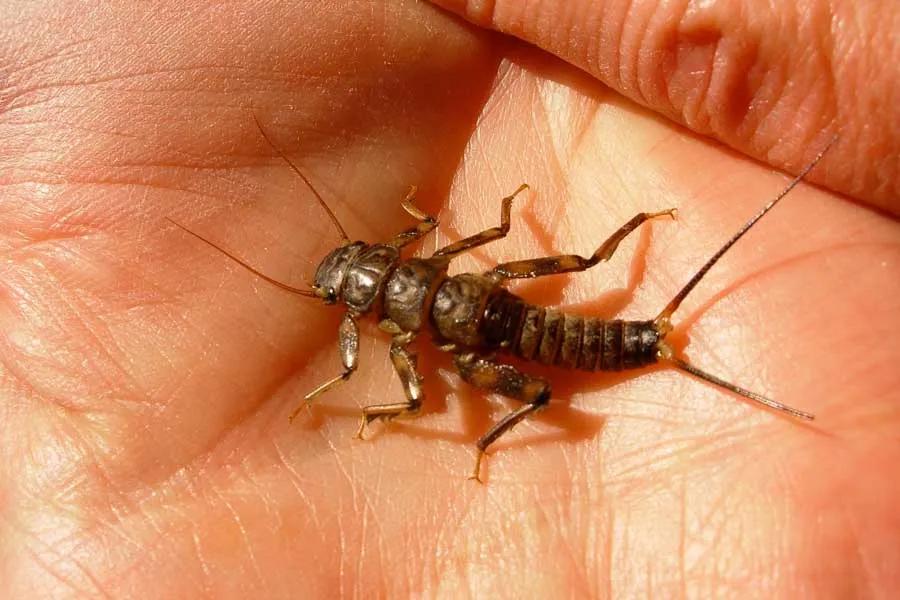
5 Top Nymphs for the Madison River
The Madison River is quite simply a fantastic nymph fishery. Day in and day out, nymphing the Madison produces quality fish. The consistency of the fishery is one of the main reasons why it is so famous and draws anglers from around the world. Lets take a look at 5 of best flies when nymph fishing the Madison.
1. Rubber leg Stonefly
Whether you call it a Girdle Bug or a Pat’s Rubber Legs or whatever else: this simple, classic stonefly pattern is a go to for many anglers when fishing the Madison. Stonefly nymphs are found in the river 365 days a year so it is always important to have some of these in your box regardless of the season. The rubber leg stone patterns can be fished in a variety of sizes from a #4 to a #12 and in several colors including brown, black, olive, and varigated. Generally speaking, in the spring use larger, darker versions and gradually go smaller and lighter as the season progresses. The fly is usually weighted so it makes an ideal point fly to get your rig down where it needs to be.
2. Prince Nymph
Another classic pattern, the prince nymph and its numerous variations is a staple on the Madison. The prince is one of those patterns that immitates a variety of different food sources but tends to work well when caddis or small stoneflies are on the water. Lighter yellow versions such as the psycho prince work especially well during the yellow sally stonefly hatch. CDC princes or flashy versions such as the "fly formerly known as Prince" all have loyal followings. If you plan to fish the Madison often make sure that you have a few of these different versions in sizes from 18 to 12 in your box. High, off-color water demands larger flies and vice versa.
3. Pheasant Tail
The Pheasant Tail is a great imitation of a mayfly nymphs from important hatches including the blue winged olives (aka beaties), pale morning duns and March browns. The original pattern works incredibly well both with and without a beadhead. The numerous iterations of pheasant tail patterns can also be effective. Whether you stick with the original pattern, or one of the many derivitives, it is an important fly to have handy. Size is also important and make sure to have a full run of everything from a size #12 down to a dimimutive size #20. The pheasant tail makes a good dropper fly behind a larger bug like a stonefly or big caddis. Blue winged olives, pale morning duns and March browns tend to hatch best on cloudy days, so keep that in mind when picking out your flies.
4. Lightning Bug
The Lightning Bug is a good choice for a general attractor nymph. It is often highly effective in the dog days of summer when the summer hatches are winding down. The Lightning Bug can also be used as a caddis imitation. The most popular colors used on the river are silver, gold, and pearl. Like the other go to patterns on this list, make sure to have a variety of sizes ranging from #12 to #20. In the larger sizes this can be used as your lead fly, while the small sizes are ideal droppers.
5. Shop Vacs, Three Dollar Dips and Serendipities
The Shop Vac is a good pattern because imitates a variety of insects, depending on what size you choose. Larger sizes are good caddis imitations and smaller versions represent midges. This fly is better in slightly smaller sizes from size #16 down to #20. There are several similar patterns including the Three Dollar Dip which is more slendar and the Serendiptie which has a similar profile to a Shop Vac. These patterns can work well year round and you should most definetly have some on hand.
While there are other nymph patterns that also produce on the Madison River, this short list can help you cover nearly every time of the year. Often on the Madison you are better off focusing on where you are fishing vs. cycling through fly after fly. If you are nymphing with a combination of the patterns above, rest assured that you are on the right path.
